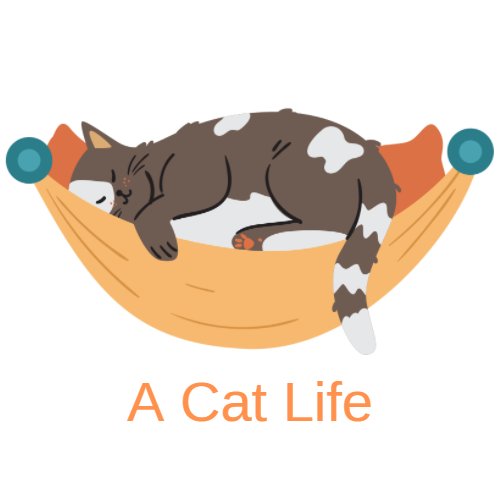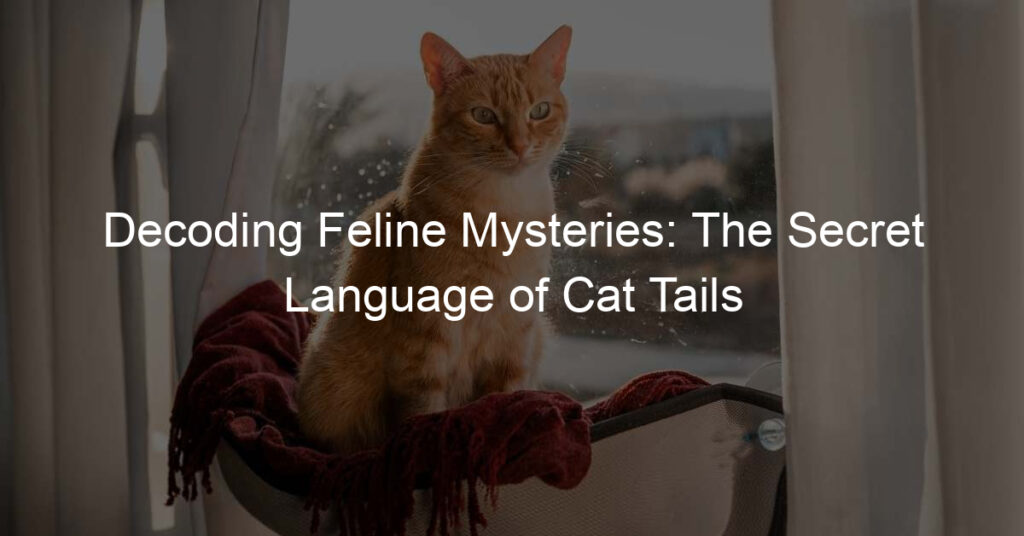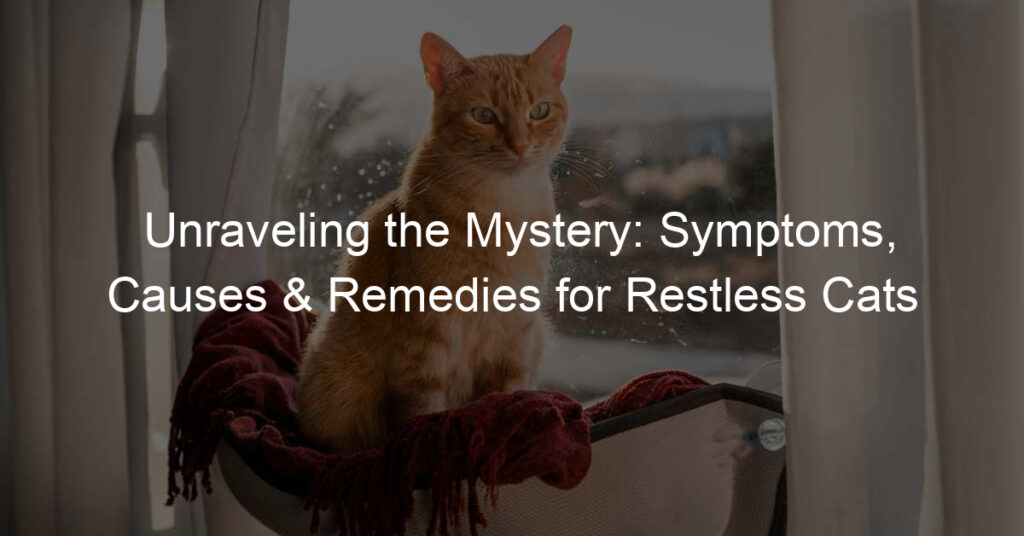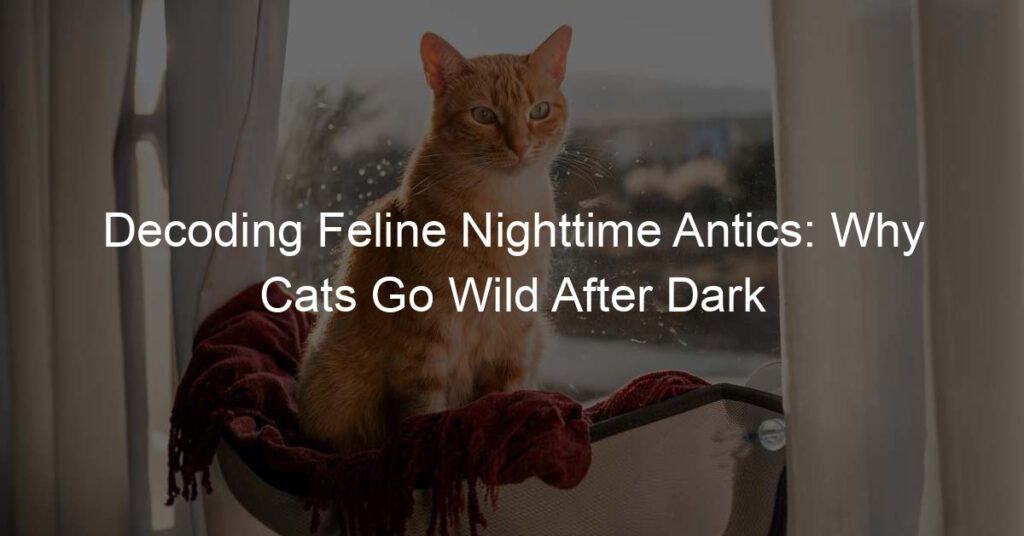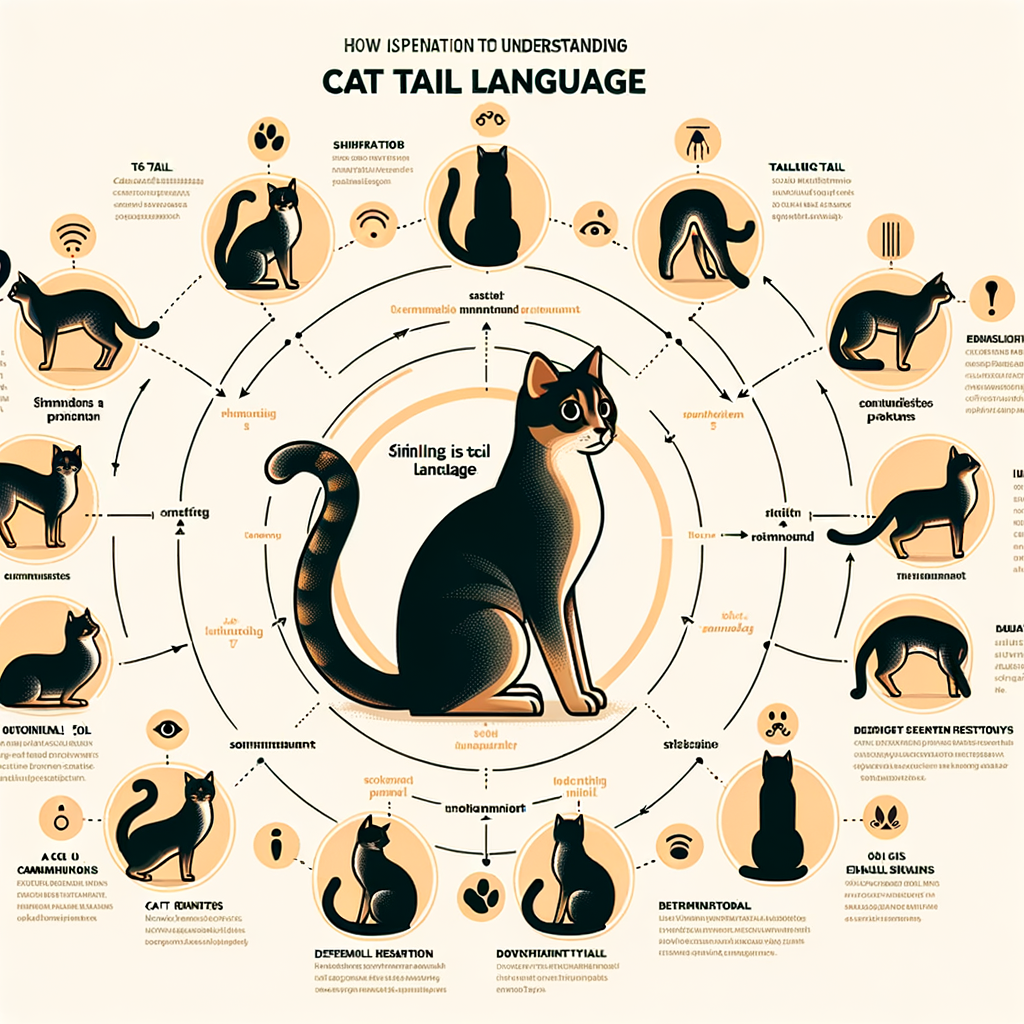
Introduction to Cat Tail Language
Have you ever wondered what your cat is trying to tell you? Cats communicate in many ways, and one of the most expressive parts of their body is their tail. Understanding cat tail language can help you better connect with your feline friend. In this section, we will explore the importance of cat tail communication and decode the mystery behind cat tail behavior.
- Understanding the Importance of Cat Tail Communication
- Decoding the Mystery Behind Cat Tail Behavior
Cat tail communication plays a vital role in how cats express their feelings and intentions. Unlike humans, cats can’t use words to express themselves. Instead, they rely on body language, and their tail is a significant part of that. By observing and understanding the movements and positions of your cat’s tail, you can gain insights into your cat’s mood and health. For instance, a high and straight tail often indicates a happy and confident cat, while a tucked tail might suggest fear or submission.
Decoding cat tail behavior can seem like a mystery at first, but with a little observation and knowledge, you can become fluent in cat tail language. Cats use their tails to communicate a variety of emotions, from happiness and curiosity to fear and aggression. For example, a cat with a puffed-up tail is usually scared or agitated, while a cat with a gently waving tail is relaxed and content. Understanding these signals can help you respond appropriately to your cat’s needs and emotions, strengthening your bond with your feline friend.
In the following sections, we will delve deeper into the purpose of a cat’s tail, provide detailed explanations of different tail signals, debunk common misconceptions about cat tail expressions, and share some interesting case studies. So, stay tuned to unlock the secret language of cat tails!
The Purpose of a Cat’s Tail
Have you ever wondered why cats have tails? The tail of a cat serves several crucial functions that are vital to their everyday life. Let’s explore these functions in detail.
- Balance and Navigation
- Communication Tool
- Indicator of Mood and Health
Just like a tightrope walker uses a pole to maintain balance, a cat uses its tail for the same purpose. The tail acts as a counterbalance when a cat is climbing or making sharp turns. It helps them navigate through narrow spaces and make precise jumps. Without their tail, cats would have a much harder time moving around with their renowned agility.
Cats are not as vocal as dogs, but they have their unique way of communicating – through their tail. A cat’s tail can tell you a lot about what it’s thinking or feeling. For instance, a high, straight-up tail often means a cat is feeling confident and happy, while a tucked tail might indicate fear or submission.
Not only does a cat’s tail serve as a communication tool, but it can also be an indicator of a cat’s mood and health. A twitching or thrashing tail often signals irritation or excitement. On the health front, changes in tail movement can sometimes indicate a medical issue, like an injury or illness. If your cat’s tail movement changes drastically, it might be a good idea to consult a vet.
In conclusion, a cat’s tail is not just an appendage but an essential tool for balance, navigation, communication, and health monitoring. So, the next time you see a cat, pay attention to its tail – it might be trying to tell you something!
Understanding Cat Tail Language
One of the most fascinating aspects of our feline friends is their ability to communicate using their tails. By paying close attention to the position and movement of a cat’s tail, we can gain a deeper understanding of their emotions and intentions. This section will focus on the interpretation of different cat tail positions.
Interpretation of Cat Tail Positions
Just like humans use body language to express their feelings, cats use their tails to convey a range of emotions. Let’s take a closer look at what different tail positions might mean:
- Upright tail: When a cat holds its tail high in the air, it’s generally a sign of confidence and happiness. This is often seen when your cat is exploring its surroundings or approaching you for some affection. For example, if you come home from work and your cat greets you with its tail upright, it’s a clear sign of their happiness to see you.
- Low tail: A low or tucked tail often indicates fear or submission. This is a common sight when a cat feels threatened or is in an unfamiliar environment. If you notice your cat’s tail is low while meeting a new pet or person, it’s likely they are feeling a bit scared or submissive.
- Curled tail: A tail curled like a question mark often signifies curiosity or uncertainty. Cats will display this tail position when they are intrigued by something, but not quite sure what to make of it. If your cat’s tail is curled while they are watching a bird outside the window, it’s a sign of their curiosity.
Understanding these tail positions can help us better communicate with our cats and respond to their needs appropriately. Remember, every cat is unique, so these interpretations may not apply to all cats in all situations. Always consider the overall context and your cat’s individual personality when interpreting their tail language.
Cat Tail Movements and Their Meanings
Just like humans, cats also use body language to communicate their feelings. One of the most expressive parts of a cat’s body is its tail. By observing the movements and positions of a cat’s tail, you can gain insights into what your feline friend might be trying to tell you. Let’s explore some common cat tail movements and their meanings.
- Quick flicks or wags: If you notice your cat’s tail making quick flicks or wags, it could be a sign of irritation or annoyance. This might happen when your cat is not in the mood for play or petting. It’s best to give your cat some space when you observe this tail movement.
- Slow swish: A slow swish of a cat’s tail often indicates concentration or anticipation. Your cat might display this tail movement when it’s focused on something, like a bird outside the window or a toy mouse on the floor.
- Fluffy and arched: When a cat’s tail becomes fluffy and arched, it’s usually a sign of fear or aggression. Your cat might display this tail movement when it feels threatened or scared. It’s important to identify the source of your cat’s fear and address it to help your cat feel safe.
For example, let’s consider a case of a cat named Whiskers. Whiskers was happily napping on the couch when his owner decided to play with him. The owner noticed that Whiskers’ tail started to flick quickly. Recognizing this as a sign of irritation, the owner decided to let Whiskers continue his nap undisturbed.
Take the case of a cat named Bella. Bella loved to watch birds from her window perch. Whenever a bird landed on the tree outside, Bella’s tail would start to swish slowly. This showed that she was concentrating on the bird and anticipating its next move.
For instance, consider a cat named Shadow. Shadow was a timid cat who was scared of loud noises. Whenever the vacuum cleaner was turned on, Shadow’s tail would become fluffy and arched. Recognizing this as a sign of fear, Shadow’s owner decided to keep Shadow in a quiet room whenever the vacuum cleaner was in use.
Understanding these tail movements can greatly enhance your relationship with your cat. By paying attention to these signals, you can better understand your cat’s feelings and respond to its needs more effectively.
Case Studies: Cat Tail Signals in Action
Let’s delve into real-life examples to better understand the language of cat tails. Here are two case studies that illustrate how cat tail signals can be interpreted in different scenarios.
- Case study 1: Understanding a cat’s tail signals in a multi-cat household
- Case study 2: Decoding the tail language of a rescue cat
In a home with multiple cats, understanding tail signals becomes crucial to maintain harmony. Let’s consider a family with three cats: Fluffy, Whiskers, and Mittens. Fluffy, the oldest, often puffs up her tail and holds it straight up when Whiskers approaches. This is a clear sign of her asserting dominance and marking her territory. Whiskers, understanding this, usually retreats, showing submission by tucking his tail between his legs. Mittens, the youngest, often holds her tail in a question mark shape when interacting with the other two, indicating her playful and curious nature.
Rescue cats often have a history of trauma, which can make their tail language more complex. Take the case of Shadow, a rescue cat adopted by a loving family. Initially, Shadow would often keep his tail low and tucked, a sign of fear and insecurity. However, as he grew more comfortable in his new home, his tail language began to change. He started to hold his tail upright with a slight curve at the end when interacting with his family, indicating trust and contentment. Understanding these subtle changes in Shadow’s tail language helped his family provide him with the right care and support.
These case studies show that by paying close attention to a cat’s tail signals, we can gain valuable insights into their feelings and needs. It’s a fascinating language that requires patience and observation to master.
Common Misconceptions About Cat Tail Expressions
While we’ve been exploring the secret language of cat tails, it’s important to address some common misconceptions that often lead to misunderstandings between humans and their feline friends. Let’s debunk a couple of these myths.
- Myth 1: A wagging tail means a happy cat
- Myth 2: A still tail means a calm cat
Contrary to popular belief, a wagging tail doesn’t always signify a happy cat. In fact, it’s often the opposite. When a cat wags its tail, it’s usually a sign of agitation or annoyance. Unlike dogs, who wag their tails when they’re excited or happy, cats use tail wagging as a warning sign. If you see your cat’s tail wagging rapidly, it’s best to give them some space.
Another common misconception is that a still tail indicates a calm cat. While this can sometimes be the case, it’s not a definitive rule. Cats often keep their tails still when they’re focused or hunting. A still tail can also indicate that a cat is feeling tense or anxious. Therefore, it’s crucial to consider the context and observe other body language cues to accurately interpret a cat’s mood.
Understanding cat tail language is a fascinating journey. By debunking these myths, we can better comprehend our feline friends and strengthen our bond with them. Remember, every cat is unique, and their tail expressions can vary. Always pay attention to the overall body language and context to accurately interpret their tail signals.
Key Takeaways
| Myth | Reality |
|---|---|
| A wagging tail means a happy cat | A wagging tail often indicates agitation or annoyance |
| A still tail means a calm cat | A still tail can mean the cat is focused, tense, or anxious |
Key Takeaways: Interpreting Cat Tail Signs
As we wrap up our discussion on cat tail signs, it’s important to remember a few key points. These will help you better understand your feline friend and improve your relationship with them.
- Understanding the context is key:
Just like human communication, cat tail language is all about context. A flicking tail might mean excitement or agitation, depending on what else is happening around your cat. For example, if your cat’s tail is flicking while they’re watching birds outside the window, it’s likely a sign of excitement. If the same tail flicking happens during a loud thunderstorm, it could be a sign of fear or agitation. Always consider the situation when interpreting your cat’s tail signs.
- Observing other body language cues:
Cat tail signs are just one part of the puzzle. To fully understand what your cat is trying to communicate, you need to observe their entire body. Are their ears flat against their head? Are their eyes wide or narrowed? These other body language cues can provide additional context to what their tail is telling you.
- Respecting your cat’s personal space and boundaries:
Remember, your cat is an individual with their own feelings and boundaries. If their tail signs indicate they’re feeling scared or uncomfortable, respect their space. Don’t force interaction. Instead, give them time to calm down and come to you when they’re ready. This respect for their boundaries will help build trust and strengthen your bond.
By keeping these key takeaways in mind, you’ll be well on your way to becoming a cat tail language expert. Remember, understanding your cat’s tail signs is a skill that takes time and patience to develop. But with practice, you’ll be able to better understand your feline friend and improve your relationship with them.
Conclusion: The Secret Language of Cat Tails
As we draw to a close on our exploration of the secret language of cat tails, it’s clear that this form of communication is far more complex and nuanced than most people realize. Understanding your cat’s tail language is not just a fun fact, but a vital tool in fostering a deeper bond with your feline friend.
- Importance of understanding cat tail language
- How it can improve the bond between you and your cat
- Final thoughts on cat tail communication
Understanding the language of cat tails is crucial for any cat owner. It allows you to interpret your cat’s feelings and needs accurately. This understanding can help you respond appropriately to their behavior, ensuring their comfort and well-being. Remember, a cat’s tail is an extension of their emotions and thoughts. It’s their way of communicating with the world around them.
When you understand your cat’s tail language, you can better respond to its needs, which strengthens the bond between you. It’s like learning a new language; the more fluent you become, the deeper your conversations can be. In this case, the conversation is non-verbal, but it’s equally meaningful. The trust and understanding that come from this can significantly enhance your relationship with your cat.
In conclusion, the secret language of cat tails is a fascinating aspect of feline behavior. It’s a silent language that speaks volumes about a cat’s emotional state. By paying attention to these subtle signals, you can better understand your cat and strengthen your bond. Remember, every cat is unique, so take the time to learn and understand your cat’s specific tail language. It’s a journey that will bring you closer to your feline friend.
So, the next time you see your cat’s tail twitch or fluff up, remember, it’s not just a random action. It’s a part of their secret language, a message they’re trying to convey. The more you understand these messages, the better you can respond to your cat’s needs and emotions, making for a happier, healthier pet.
